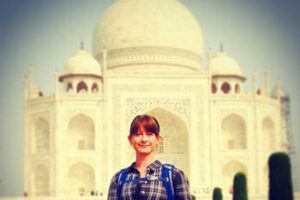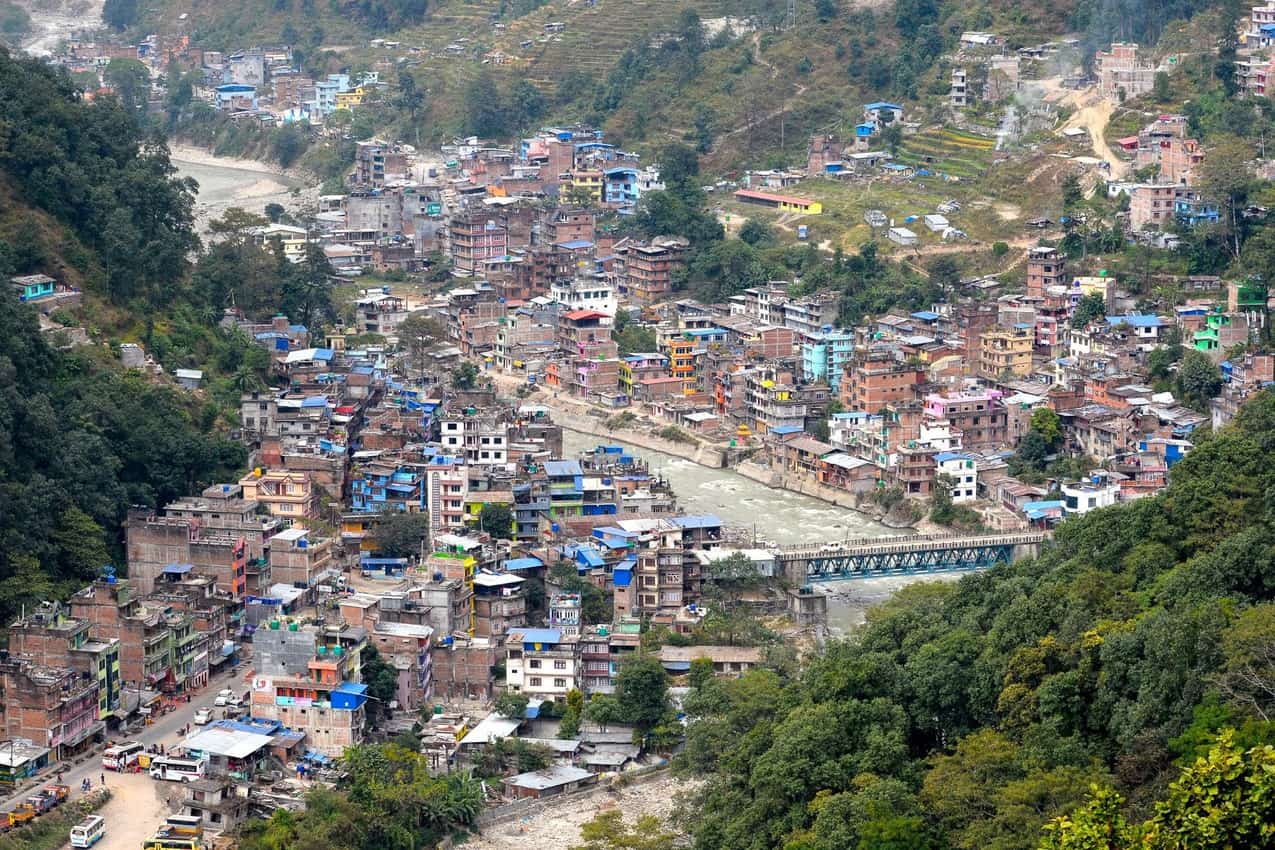
Kayaking and Traveling on Buses with Kayaks Across Nepal
By Tom Kilpatrick
The heavens opened over a city devoid of drainage. Everything ends up in the lake anyway.
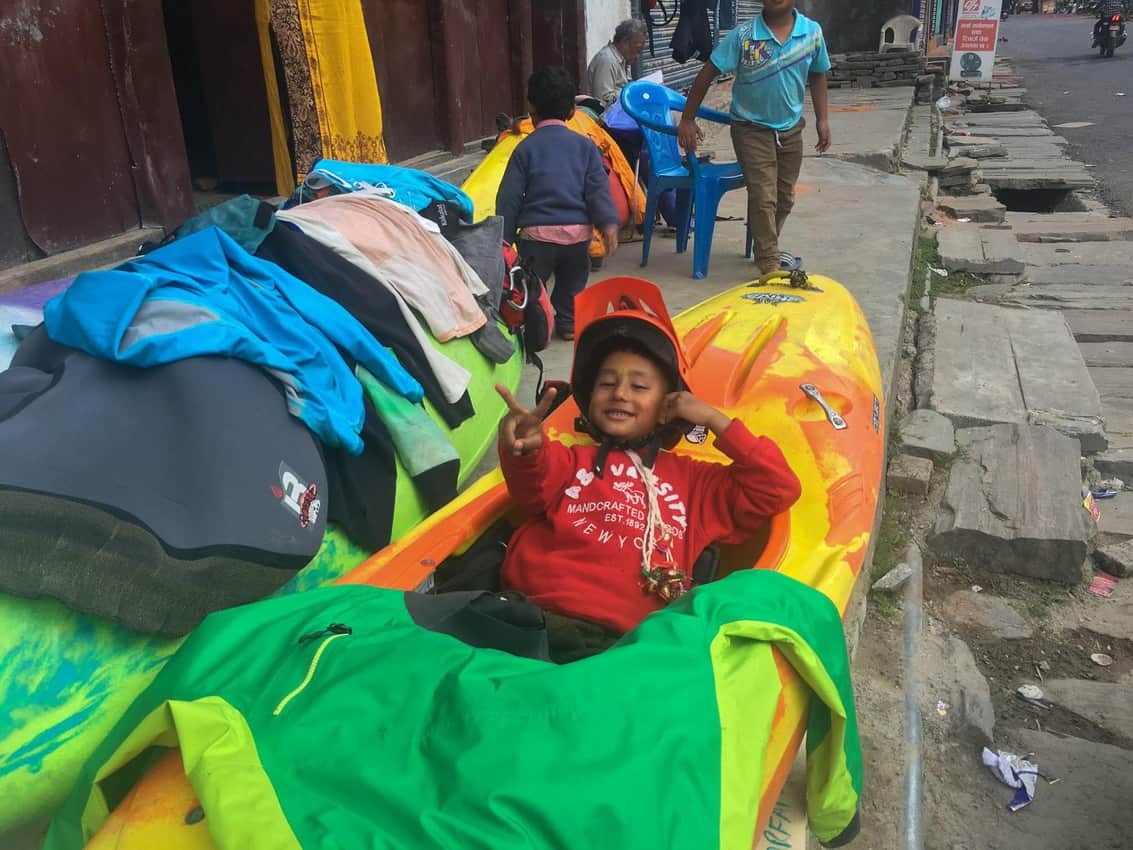
We were tired, hungry and full of sand from four days of kayaking and camping on the Trisuli and Lower Seti.
Our kayaks, loaded as they were with all the equipment to keep us on the road for two weeks, weighed heavily on sore shoulders.
A kindly shopkeeper beckoned us into the dry, drew a bench out from the wall and cracked open three cold Everest Beers. We sat, dripped and sipped.
“350 rupees each,” he said.
Of course, these weren’t gratuitous pity beers. Here was a salesman who saw an opportunity. We didn’t care, the beer tasted as good as ever and we still had over a kilometer of Pokhara to trudge through to reach our hostel.
Beers emptied and rain slightly abated we hoisted our 35kg packs on our shoulders and set off. I was wetter than I had been on any of the rivers so far.
 It was awful. Even worse, we arrived at the hostel to find it was full. Josh, having been to Pokhara before, set off into the night leaving Glenn and I standing in the rain. Just a few minutes later he returned, grinning wildly.
It was awful. Even worse, we arrived at the hostel to find it was full. Josh, having been to Pokhara before, set off into the night leaving Glenn and I standing in the rain. Just a few minutes later he returned, grinning wildly.
“I’ve found somewhere perfect, 900 rupees per night”
“Each?”
“Nope”
Ignoring the impressively dodgy alleyway he led us up, the hotel was indeed perfect, by 900 rupees per night standards at least. We locked our boats up, dried, showered then dried again, and set out in search of food.
Up another grubby alleyway, we sat altogether too close to a sewage outlet and ate the best dal bhat, a traditional Nepali lentil, and rice dish, of the trip. Maybe we were just really hungry.
When Glenn had first approached me about the trip I was in two minds. On one hand, white water kayaking in Nepal was so tantalizingly close to the top of my wish list, I couldn’t say no.
On the other, my bank account was struggling so early into the summer and flights would all but clean me out.
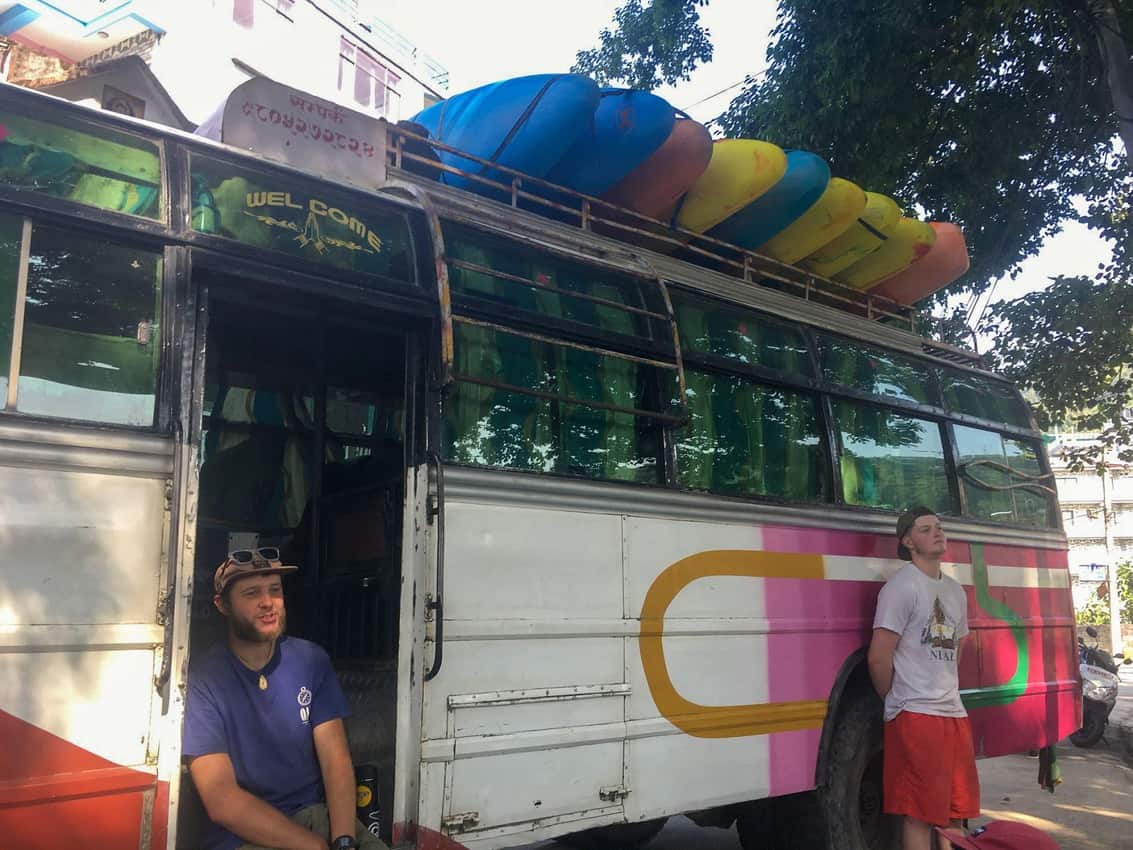
He’s nothing if not persistent, Glenn, and badgered me incessantly until I sent him confirmation that I had booked flights. It was the only way to shut him up.
We paused for a few days in Pokhara for a rest, some washing and a few laps of the Upper Seti – a narrower more technical river than the big volume rollercoasters of the Trisuli and, to a lesser extent, the Lower Seti – with the rafting company we met on the road.
“Are you Going to Modi Khola?”
Hunting for dinner one night we heard shouts of, “Hey, British kayakers, are you going to Modi Khola?”
“Yep,” we instinctively answered, “What is it?”
A race series. We’re not racers. Inside the Annapurna National Park? The Entry fee includes the permit, accommodation, and food for four days? Sign us up!

We had two days to pass and Charlie, our French oracle from Ganesh Kayaking, found us a bus leaving for the Kali Gandakhi, another high volume, two-day river trip.
We frantically read the guidebook on the bus to the river in an attempt to work out what we were about to be paddling. “Soon after the start, you come to Big Brother (5-), one of the major rapids on the river.”
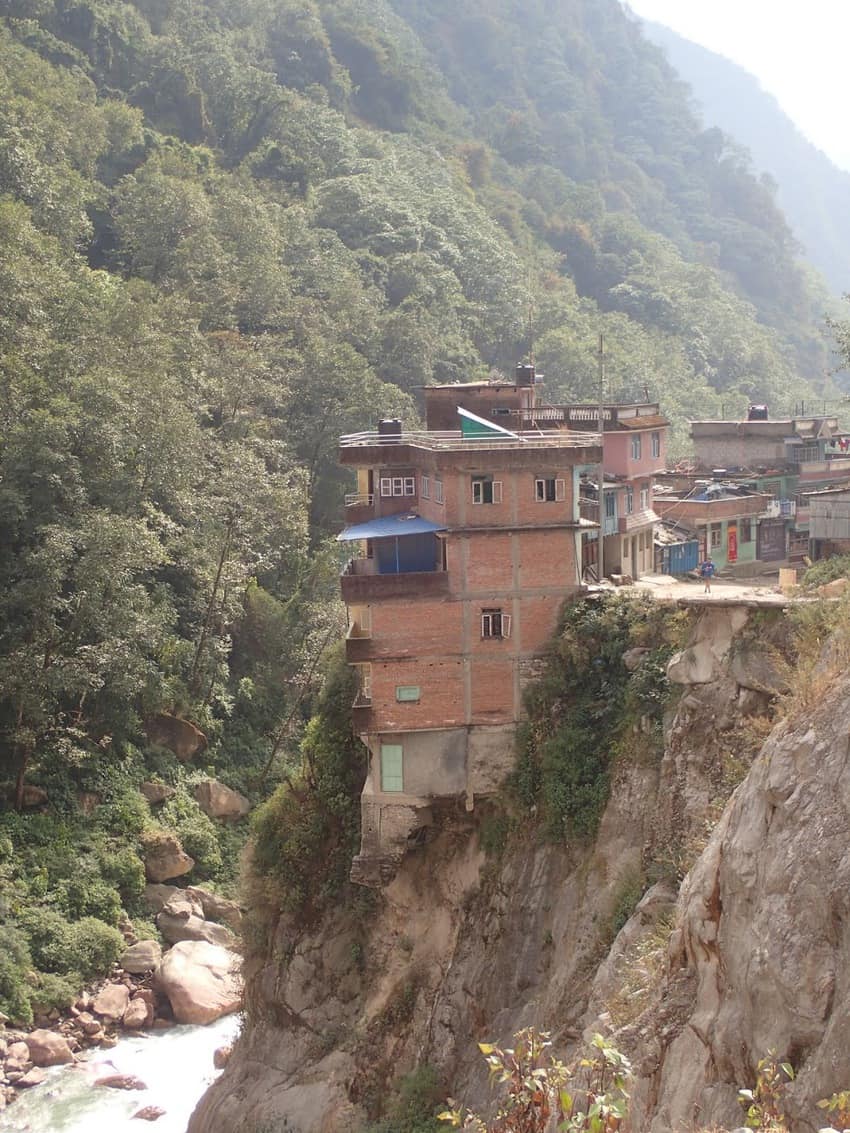
Not that Big
“It’s not that big” we all agreed, standing on the bank looking down at the ‘major rapid’. A quick rock paper scissors to see who would go first and we were off to be proven so very wrong.
It’s a much bigger rapid when you’re not standing on a house-sized rock looking down on it all and the waves hit us like brick walls.
We bounced and barrelled our way through and were relieved when Josh rolled back upright halfway down.
The Kali Gandaki topped the list as my favorite river of the trip. Rapids hundreds of meters long stretched downstream and on the mellow sections between we floated.
Waterfalls cascaded from high, down the steep wall on our left, and on our right monkeys swung in the trees as kingfishers flitted across the surface of the river.
At camp that night we sat around the embers of what was once a roaring fire heating our lentils and rice and watched fireflies dance overhead. Once again we drifted off to sleep listening to monkeys hooting in the trees behind us.
Back to Pokhara on the Roof
As is customary on every kayaking trip in Nepal, we traveled back to Pokhara on the roof of the bus. This wasn’t so much by choice, more so that the seats we reserved with our thousand rupees each were full and the occupiers weren’t for moving. The roof was comfortable and we dozed in the dwindling sun until, roughly halfway, we stopped in a small village.
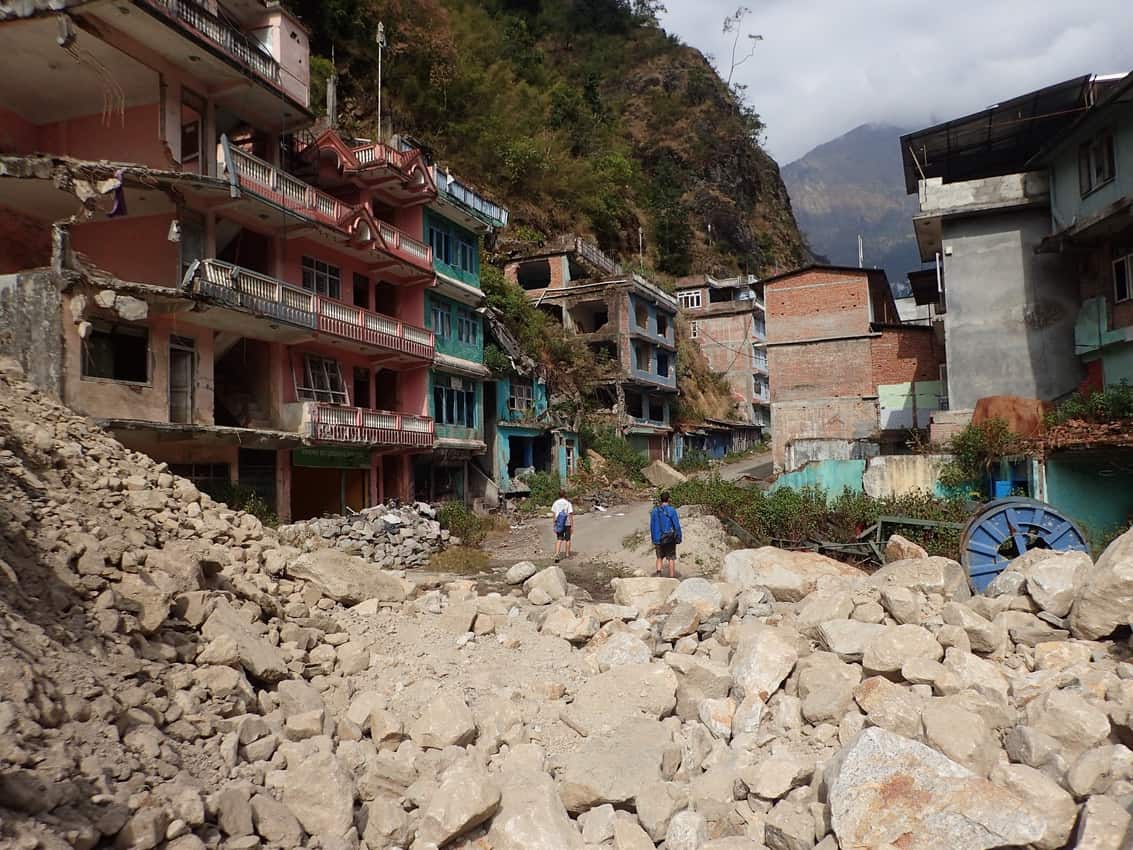
A rope began hoisting something to the roof. This something was bleating in protest but to no avail. He joined us on the roof and the protest took on a much dirtier angle. We didn’t sleep anymore.
Oh well, our 900 rupees (“Each?”, “No!”) hotel awaited, and the Modi Khola in the morning.
Scenic Modi Khola River
Draining Shiva’s home on Machapuchare, the holy mountain, the Modi Khola remains the most scenic river I have ever paddled. Also probably the most technically difficult. Three days of racing, partying and dal bhat with representatives of eleven nations was an incredible way to mark the midpoint of our trip.
Meeting these kayakers and sharing the river with them felt poles apart from our little group of three we had become accustomed to.
On the final day of the event, we all set off for a full descent of the river. The return bus to Pokhara was set to leave at 5 pm and wouldn’t wait. But we had plenty of time.

One of our shuttle buses promptly broke down and the road to the top was steep, narrow, potted dirt. At one point a bus met us head-on.
There wasn’t enough room to pass but neither driver wanted to reverse along a road which was treacherous enough going forwards.
After a long discussion, our driver called us all off the bus. He then instructed us to collect rocks and fill in the drainage ditch, thus widening the road and allowing them to pass one another. I can now officially add ‘road builder’ to my CV.
By the time we got to the start we had just two hours to paddle a stretch of river for which kayakers usually allow four to five. A train of thirty-five of us set off. With so many people on the river, carnage seemed inevitable; all I had to do was avoid it.
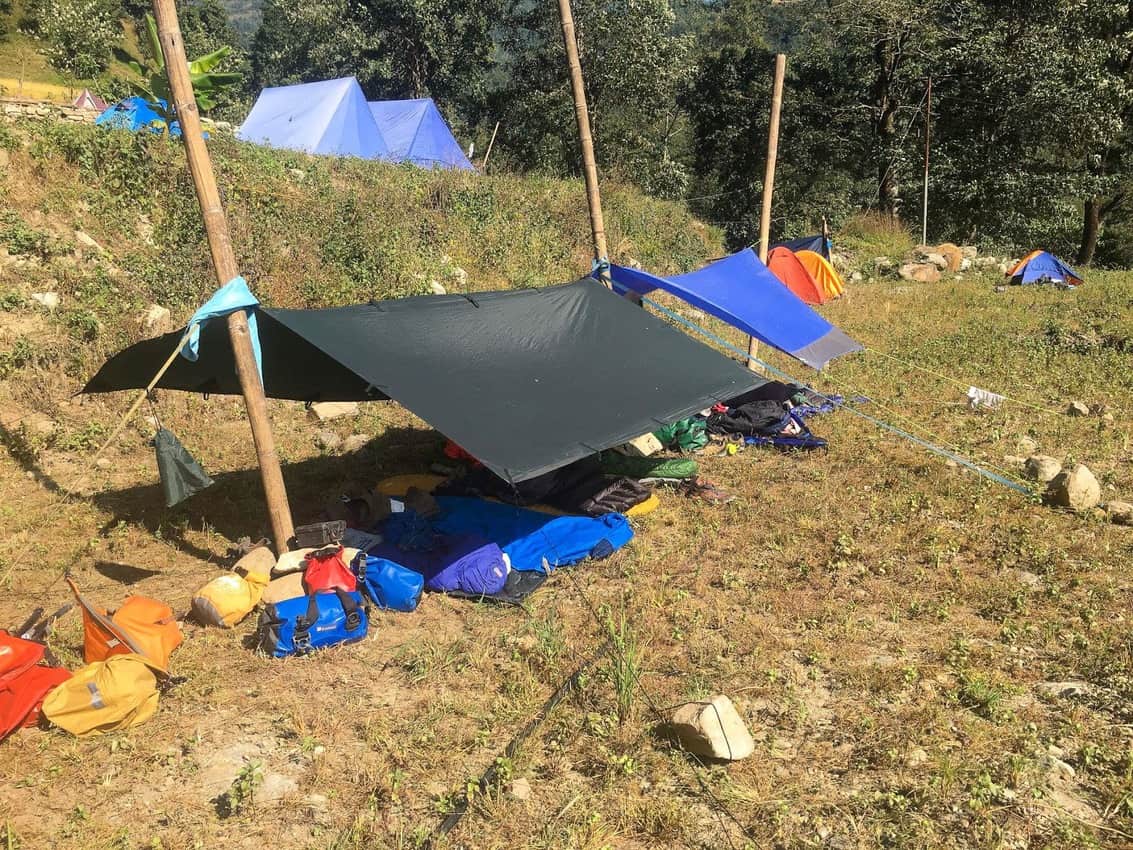
I didn’t avoid it. I was right in it.
A Nepali kayaker got stuck in a retentive wave at the bottom of a two-meter drop, closely followed by Jim, a German kayaker, me and Glenn. We spent what felt like an eternity washing around in the foam, unable to breathe, unable to find ‘up’. I was running dangerously short of breath when I felt ‘whoomph’.
Gregg had landed on my head. Everything went dark and blue. I was out of the wave, but I was deep down in the river and desperately needed some air. I was getting scared.
Reaching the surface I spluttered my way to the bank, coughing, shaking, cold but ultimately alive. It was rough and I still had half the river to go. Unsurprisingly I fell in again soon after, still shaken, and paddled awfully as I froze my way to the get out.
Just before the bus left I brought myself back to life with some extremely cheap samosas.
A Battered Boat
My boat was battered and I was beaten. We took a few days off and traveled via Kathmandu to the Sun Koshi for some warm, relaxed kayaking, glamping at a rafting camp just on the shores. We befriended a few rafting companies up and down the stretch and spent a relaxed week paddling the Upper Sun Koshi and the Balephi.
The small villages of Khadichur and Jabire saw fewer westerners than many places we had been, and youngsters had a great time trying on our kayaking kit and sitting in our boats before waving us off downstream. They also took great delight in my plight when I carefully placed my boat right in a definitely human turd at the start of the Balephi.
Relaxed, recuperated and ready, we waved down a bus in the traditional Nepali way of shouting our destination at it until it stops, and headed to Bharabise for our last river of the trip. This system of shouting only works because the buses are so unbelievably slow.
Were they any more modern they would just shoot past? They also all have roof racks, so while Josh negotiated tariffs, Glenn and I would load our boats to the roof and tie them down. Josh claimed this was because he was a good negotiator. Glenn and I were certain it was because he wanted to avoid heavy lifting at all costs and had somehow managed to negotiate his way out of doing any.

The Bhote Koshi
The Bhote Koshi is a must for white water kayakers in Nepal. We had been joined by Bjarne, a Swedish adventure filmmaker, and Darby, one of the top young paddlers in the US. Bjarne was keen to get some filming in as we paddled this classic section and the rest of us were keen to oblige.
It was seventeen kilometers of pure white water action top to bottom with big waves, technical sections drops, and rocks careering you back to Bharabise. Awesome. The perfect end to a trip and it felt as though everything to this point had built to this river.
Bharabise itself is a rundown, dusty city overflowing with colorful buildings. We were in town during one of Nepal’s many holy festivals and the city was lit up at night. It was quite beautiful.
We had witnessed endless festivals as we traveled the country and my favorite by far was the Kukur Tihar, the day of the dogs, where our four-legged friends are draped in garlands and given Tikal, a Buddhist mark.
Darby and Bjarne headed off early to continue their project, and we took a break from kayaking for our last day in town in favor of some cultural tourism. The valley that Bharabise sits in was devastatingly affected by the earthquake of 2015. While the city has mainly been rebuilt, just a few miles up the road, Tatopani sits as a reminder of the destruction.
Efforts are underway to clear and rebuild the town, but we were climbing over rubble to get around. Houses clung teetering on the edge of the riverbank, their foundations washed into the flow below.
Washing hung in rooms exposed as walls collapsed; office paperwork littered the official buildings which marked the border gateway to China. On the far side of the river, in China itself, monkeys swung down cables hanging off a half-destroyed office block.
It was a sobering way to end the trip and the ongoing dangers almost became all too real as we headed back toward Bharabise. Walking out of Tatopani, the track we had come in on was buried under a fresh landslide. Mud was still sliding but it seemed to have subsided, mostly. We had two options, run across the hundred meters of subsidence, or head back and round for an arduous hour.
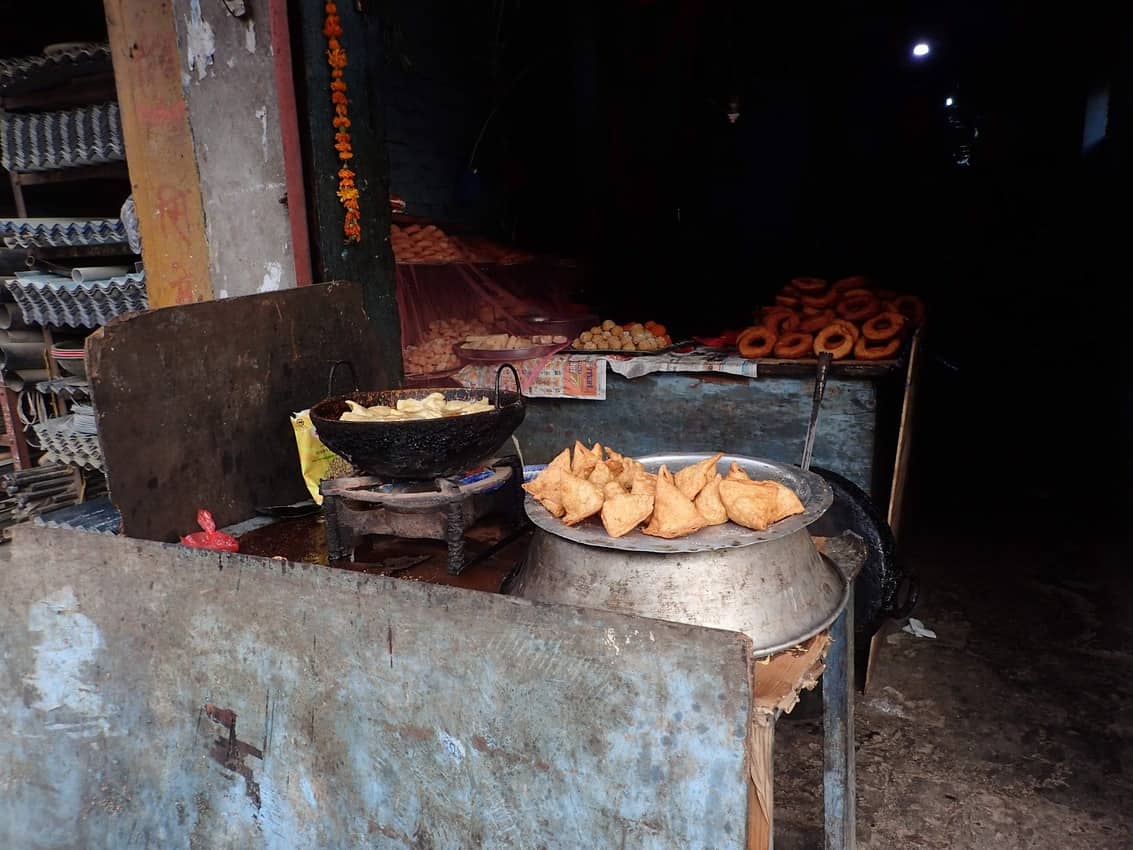
We ran. I was at the back and as I stepped onto solid ground, the whole area we had run on disappeared downhill into the Bhote Koshi. We were stupid, but we were lucky.
Our final night in Bharabise was a quiet one. Humbled by the day’s experiences and exhausted from a month of kayaking and traveling, we were exhausted beyond measure.
I awoke first the next morning and when I entered the kitchen Vimson, owner of the family-home-cum-guesthouse we stayed in, offered me “Omelette and a coffee?”
Amazing, a relatively normal breakfast. We’d had dal bhat, samosas, chow mein and at one point hash browns which turned out to be potatoes fried in chili, but here was an omelet. I’m not sure why but I was really excited.
Half an hour later when the others appeared, my omelet and coffee were still, I assumed, being prepared. Maybe he was willing the chickens to lay some eggs?
Vimson appeared with three steaming plates and three steaming mugs and placed them in front of us.
“Egg chow mein and tea,” he beamed.
Well, it was close.
We bade Vimson and his family farewell, turned down his offers of buying anything electrical we owned, and headed back to Kathmandu. We had time on the return journey for a quick lap of the Sun Koshi and a meal with at the camp we had called home for over a week.
The long and dusty journey ended in Kathmandu for two days of being tourists, visiting the monkey temple in tuk-tuks, drinking coffee and reminiscing.
I also bought some 100% yak wool trousers. Guaranteed 100%. But not really 100%.
“It just looks good when we export them you see,” the shopkeeper told me with a wink.
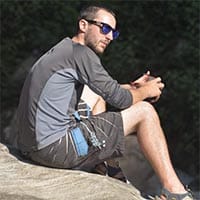
Tom Kilpatrick is an English adventurer who has spent the last few years exploring different countries. He has kayaked, snowboarded, run and traveled in all sorts of places and met some extremely interesting people along the way.
- Camino Tales: Wine and Memories in Galicia, Spain - July 25, 2024
- Beluga Hunting in Norway - July 20, 2024
- Costa Rica: A Rainforest Chocolate Tour - July 18, 2024




